|
|
|
This all-new card includes images created on my JAN 2022 visit to San Diego. Click on the composite to enjoy a larger version. |
The 2022/23 San Diego Brown Pelicans (and more!) IPTs
San Diego IPT #1. 3 1/2 DAYS: WED 21 DEC thru the morning session on Saturday 24 DEC 2022. $2099.00. Deposit: $699.00. Limit: 6 photographers/Openings: 5.
San Diego IPT #2. 4 1/2 DAYS: SAT 7 JAN thru the morning session on WED 11 JAN 2023: $2699.00. Deposit: $699.00. Limit: 6 photographers/Sold Out.
San Diego IPT #3: 4 1/2 DAYS: THURS 19 JAN thru the morning session on MON 23 JAN 2023: $2699.00. Deposit: $699.00. Limit: 6 photographers.
Please e-mail for information on personalized pre- and post-IPT and In-the-Field Sessions.
Join me in San Diego to photograph the spectacular breeding plumage Brown Pelicans with their fire-engine red and olive green bill pouches; Brandt’s (nesting) and Double-crested Cormorants; breeding plumage Wood and Ring-necked Ducks; other duck species possible including Lesser Scaup, Redhead, Northern Shoveler and Surf Scoter; a variety of gulls including Western, California, and the gorgeous Heermann’s, all in full breeding plumage; shorebirds including Marbled Godwit, Willet, Sanderling and Black-bellied Plover; many others are possible including Least, Western, and Spotted Sandpiper, Whimbrel, Black and Ruddy Turnstone, Semipalmated Plover, and Surfbird; Harbor Seals and California Sea Lions (both depending on the current regulations and restrictions). And as you can see by studying the IPT cards, there are some nice bird-scape and landscape opportunities as well. Not to mention a ton of excellent flight photography opportunities and instruction.
Please note: where permitted and on occasion, ducks and gulls may be attracted (or re-located) with offerings of grains or healthy bread.
|
|
|
San Diego offers a wealth of very attractive natural history subjects, including and especially the Pacific race of California Brown Pelican. With annual visits spanning more than four decades, I have lots of photographic experience there … Click on the composite to enjoy a larger version. |
Learning Exposure, Whether You Like It Or Not
Whether you like it or not, we will be beating the subject of exposure like a dead horse. In every new situation, you will hear my thoughts on exposure along with my thoughts on both Nikon and Canon histograms and SONY Zebras. Whether you like it or not, you will learn to work in manual mode so that you can get the right exposure every time (as long as a bird gives you ten seconds with the light constant). Or two seconds with SONY zebras … And you will learn what to do when the light is changing constantly. What you learn about exposure will be one of the great takeaways on every IPT.
|
|
|
Though the pelicans will be the stars of the show on this IPT, there will be many other handsome and captivating subjects in wonderful settings. Click on the composite to enjoy a larger version. |
It Ain’t Just Pelicans
With gorgeous subjects just sitting there waiting to have their pictures taken, photographing the pelicans on the cliffs is about as easy as nature photography gets. With the winds from the east almost every morning there is usually some excellent flight photography as well, often with 70-200mm lenses! And the pelicans are almost always doing something interesting: preening, scratching, bill pouch cleaning, or squabbling. And then there are those crazy head throws that are thought to be a form of intra-flock communication. You will be guided as to how to make the best of those opportunities. Depending on the weather, the local conditions, and the tides, there are a variety of other fabulous photo chances available in and around San Diego.
|
Did I mention that there are lots of great birds and natural history subjects in San Diego in winter? Click on the composite to enjoy a larger version. |
The San Diego Details
These IPTs will include four or five 3-hour morning photo sessions, three or four 1 1/2-hour afternoon photo sessions, and three or four working brunches that will include image review and Photoshop sessions. On rare cloudy days, we may — at the leader’s discretion, stay out in the morning for a long session and skip that afternoon. To ensure early starts, breakfasts will be your responsibility. And so that we can get some sleep, dinners will be on your own as well. In the extremely unlikely event that Goldfish Point is closed due to local ordinance (or whimsy) — that has never happened in the past fifty years, I will of course do my very best to maximize our photographic opportunities.
|
|
|
San Diego offers a wealth of very attractive natural history subjects, including and especially the Pacific race of California Brown Pelican. With annual visits spanning more than four decades, I have lots of photographic experience there … Click on the composite to enjoy a larger version. |
Deposit Info
A $699 deposit is required to hold your slot for one of the 2022/23 San Diego IPTs. You can send a check (made out to “BIRDS AS ART”) to us here: BIRDS AS ART, PO Box 7245, Indian Lake Estates, FL, 33855, or call Jim or Jennifer at the office with a credit card at 863-692-0906. Your balance, payable only by check, is due three months before the trip.
|
Variety is surely the spice of life in San Diego. Click on the composite to enjoy a larger version. |
Getting Up Early and Staying Out Late
On all BIRDS AS ART IPTS including and especially the San Diego IPT, we get into the field early to take advantage of unique and often spectacular lighting conditions and we stay out late to maximize the chances of killer light and glorious sunset silhouette situations. We often arrive at the cliffs a full hour before anyone else shows up to check out the landscape and seascape opportunities.
What’s Up?
Despite spending several hours work on the alleged NANPA/ASMP merger, I finished the slide program for yesterday’s B&H Event Space program with plenty of time to spare. The program went off smoothly and I received several complimentary e-mails.
Today is Wednesday 23 November 2022. The forecast for ILE this morning is calling for cloudy with a north wind. It’s been that way for six days, but has been getting warmer. I had the heat on last weekend for the first time this season; last night I needed the AC. I will be heading down to the lake for a quick look. This blog post took about 90 minutes to prepare and makes two hundred forty-one days in a row with a new, educational post just for you. Wherever you are and whatever you are doing, I hope that you too have a great day.
Please remember to use the B&H and Amazon links that are found on most blog pages and to use the BIRDSASART discount code at checkout when purchasing your new gear from Bedfords to get 3% back on your credit card and enjoy free second-day air FedEx. Please, also, consider joining a BAA IPT. You will be amazed at how much you will learn!
You can find some great photo accessories (and necessities, like surf booties!) on Amazon by clicking on the Stuff tab on the orange/yellow menu bar above. On a related note, it would be extremely helpful if blog-folks who, like me, spend too much money on Amazon, would get in the habit of clicking on the Amazon logo link on the right side of each blog post when they shop online. As you might expect, doing so will not cost you a single penny, but would be appreciated tremendously by yours truly. And doing so works seamlessly with your Amazon Prime account.
Please remember that if an item — a Delkin flash card, or a tripod head — for example, that is available from B&H and/or Bedfords, is also available in the BAA Online Store, it would be great, and greatly appreciated, if you would opt to purchase from us. We will match any price. Please remember also to use my B&H affiliate links or to earn 3% cash back at Bedfords by using the BIRDSASART discount code at checkout for your major gear purchases. Doing either often earns you free guides and/or discounts. And always earns my great appreciation.
Almost Deleted This One
|
|
|
This image was created on 18 January 2018 on a San Diego IPT. I used the handheld Canon EF 100-400mm f/4.5-5.6L IS II USM lens (at 241mm) and the EOS-1DX Mark II. Shutter Priority +1.3 stops. AUTO ISO set ISO 400: 1/15 sec. at f/9 (stopped down 1 1/3 stops). AWB at 7:03:15am on a cloudy morning well before the sun came of the hill. AF Method unknown. Click on the image to enjoy a high-res version. a magnified look at the face of the bird in the Western Gull in-flight blur image |
Looking for Good Ones
While reviewing San Diego image folders from previous years for the Event Space program, I found many wonderful images that had not been optimized. During that process, however, I deleted many sub-par images to create space on my laptop. When I viewed today’s featured image in Photo Mechanic, it looked rather blah and the bird was too centered. I liked the blurred background and the beautifully blurred wings. But the face and the eye looked too blurred. I was ready to hit the delete key when I decided to zoom in on the eye.
|
|
|
This image was created on 18 January 2018 on a San Diego IPT. I used the handheld Canon EF 100-400mm f/4.5-5.6L IS II USM lens (at 241mm) and the EOS-1DX Mark II. Shutter Priority +1.3 stops. AUTO ISO set ISO 400: 1/15 sec. at f/9 (stopped down 1 1/3 stops). AWB at 7:03:15am on a cloudy morning well before the sun came of the hill. AF Method unknown. Click on the image to enjoy a high-res version. Photoshop screen capture of a magnified look at the face of the bird in the Western Gull in-flight blur image |
Why I Kept It
When I zoomed in on the eye, I was surprised to see that it was fairly sharp with very little motion- or pan-blurring. I thought that it might make a nice image with the colors juiced up, a small crop from the top and bottom left (to move the bird slightly forward in the frame), and a little Eye Doctor work.
So, I decided to keep and optimize the image. Note that you can see the slider settings that I used to convert the raw file with Adobe Camera Raw.
|
|
|
This image was created on 18 January 2018 on a San Diego IPT. I used the handheld Canon EF 100-400mm f/4.5-5.6L IS II USM lens (at 241mm) and the EOS-1DX Mark II. Shutter Priority +1.3 stops. AUTO ISO set ISO 400: 1/15 sec. at f/9 (stopped down 1 1/3 stops). AWB at 7:03:15am on a cloudy morning well before the sun came of the hill. AF Method unknown. Click on the image to enjoy a high-res version. Western Gull in-flight blur |
The Optimized Image
I am glad that I did not delete this one. Had I pushed the shutter button a fraction of a second earlier, I would have enjoyed more of the aqua/blue/green streaks behind the bird. But I might not have loved the flight pose and the degree of blurring on the wings.
The Mother of Invention
As I mentioned in last night’s program, when the light levels get really low, necessity often becomes the mother of invention. If you want to create sharp images in ultra-low light, you will need to compromise on shutter speeds while still working with ridiculously high ISOs, perhaps 128,000 or 256,000. By opting to try to create some pleasing blurs, you are still in the game. Note 400 ISO for today’s image. The only other option is to not photograph. In the mornings, it would mean standing there doing nothing, and in the evenings, it would entail quitting and getting home early.
What Bugged Me?
From the start, one thing bugged me about today’s image. It could have been eliminated during the post processing. If you think that you know what it is, please leave a comment.
Your Call
Would you have kept this image or deleted it? Why or why not?
|
|
A Guide to Pleasing Blurs
Learn everything there is to know about creating pleasingly blurred images in A Guide to Pleasing Blurs by Denise Ippolito and yours truly. This 20,585-word, 271-page PDF is illustrated with 144 different, exciting, and artistic images. The guide covers the basics of creating pleasingly blurred images, the factors that influence the degree of blurring, the use of filters in creating pleasing blurs, and a great variety of both in-the-field and Photoshop techniques that can be used to create pleasingly blurred images.
Artie and Denise teach you many different ways to move your lens during the exposure to create a variety of pleasingly blurred images of flowers and trees and water and landscapes. They will teach you to recognize situations where subject movement can be used to your advantage to create pan blurs, wind blurs, and moving water blurs. They will teach you to create zoom-blurs both in the field and during post-processing. Artie shares the techniques that he has used and developed for making blurred images of flocks of geese in flight at his (formerly) beloved Bosque del Apache and Denise shares her flower blur magic as well as a variety of creative Photoshop techniques that she has developed.
With the advent of digital capture creating blurred images has become a great and inexpensive way to go out with your camera and have fun, especially when there is not much light. And while many folks think that making successful blurred images is the result of being a sloppy photographer, nothing could be further from the truth. In “A Guide to Pleasing Blurs” Artie and Denise will help you to unleash your creative self.
|
|
The BIRDS AS ART Current Workflow e-Guide (Digital Basics II).You can order your copy from the BAA Online Store here, by sending a PayPal for $40 here, or by calling Jim or Jennifer weekdays at 863-692-0906 with your credit card in hand. Be sure to specify Digital Basics II. |
The BIRDS AS ART Current Workflow e-Guide (Digital Basics II)
The techniques mentioned above and tons more great Photoshop tips and techniques — along with my complete digital workflow, Digital Eye Doctor Techniques, and all my personalized Keyboard Shortcuts — are covered in detail in the BIRDS AS ART Current Workflow e-Guide (Digital Basics II), an instructional PDF that is sent via e-mail. Note: folks working on a PC and/or those who do not want to miss anything Photoshop may wish to purchase the original Digital Basics along with DB II while saving $15 by clicking here to buy the DB Bundle.
Folks who learn well by following along rather than by reading can check out the complete collection of MP 4 Photoshop Tutorial Videos by clicking here. Note: most of the videos are now priced at an amazingly low $5.00 each.
You can learn how and why I converted all of my Canon digital RAW files in DPP 4 in the DPP 4 RAW Conversion Guide here. More recently, I became proficient at converting my Nikon RAW (NEF) files in Adobe Camera Raw. About three years ago I began converting my Nikon and Sony RAW files in Capture One and did that for two years. You can learn more about Capture One in the Capture One Pro 12 Simplified MP4 Video here. The next step would be to get a copy of Arash Hazeghi’s “The Nikon Photographers’ Guide to Phase One Capture One Pro e-Guide” in the blog post here. Today, I convert my Sony raw files in Photoshop with Adobe Camera Raw.
You can learn advanced Quick Masking and advanced Layer Masking techniques in APTATS I & II. You can save $15 by purchasing the pair.
Typos
With all blog posts, feel free to e-mail or to leave a comment regarding any typos or errors.

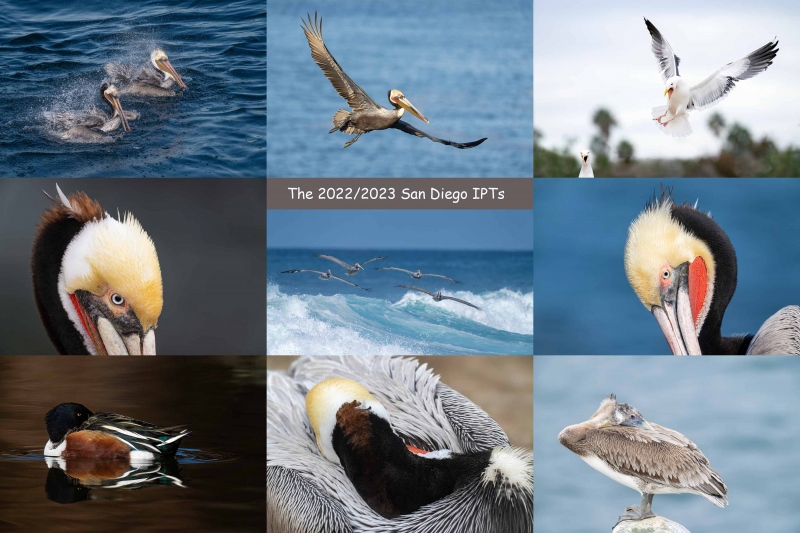
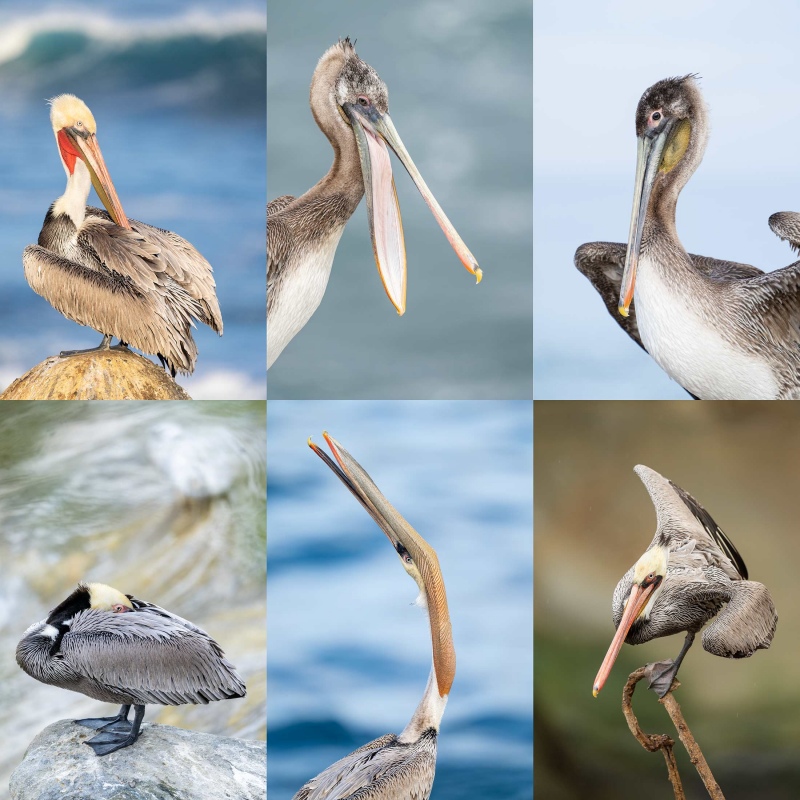
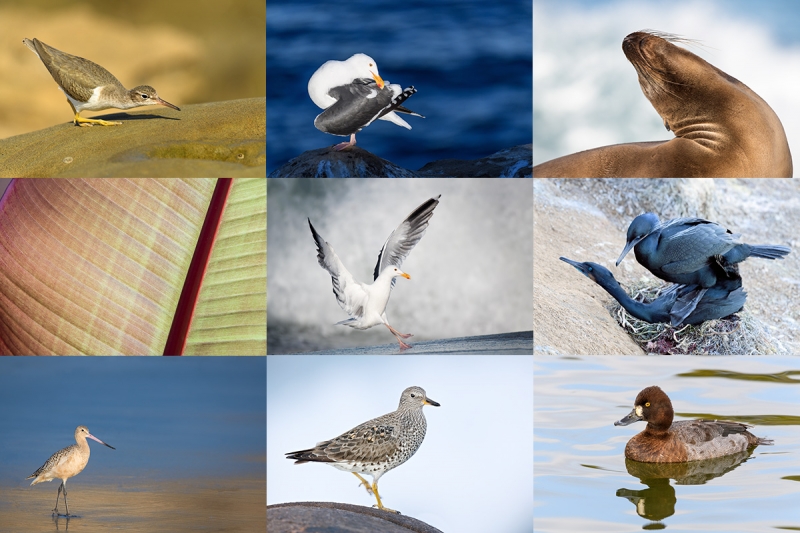

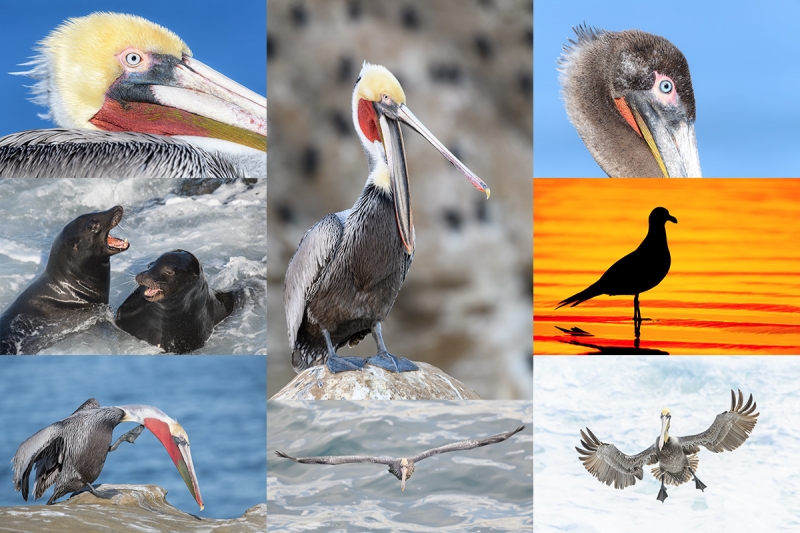

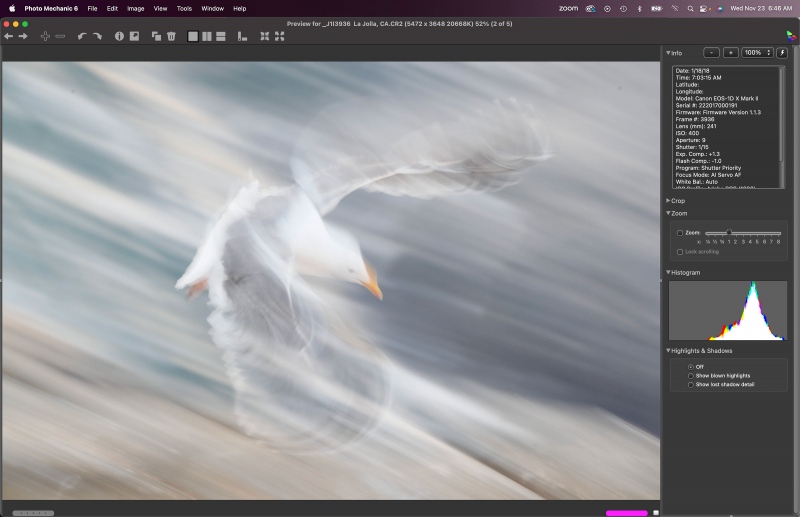
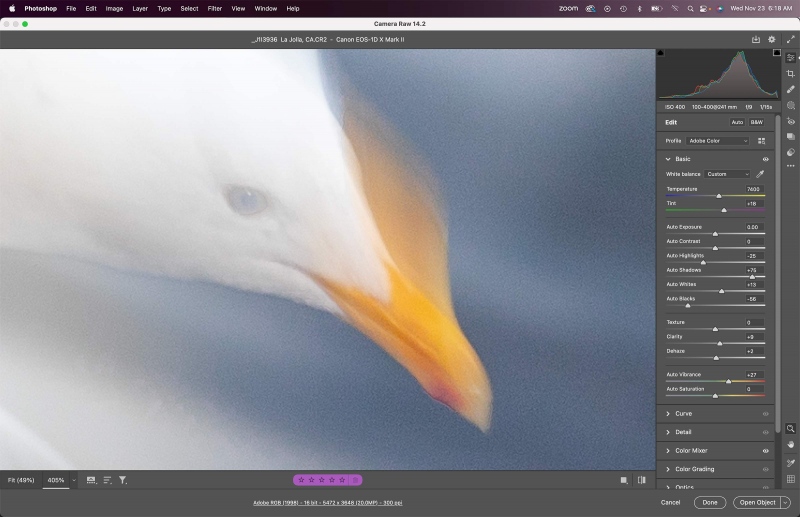
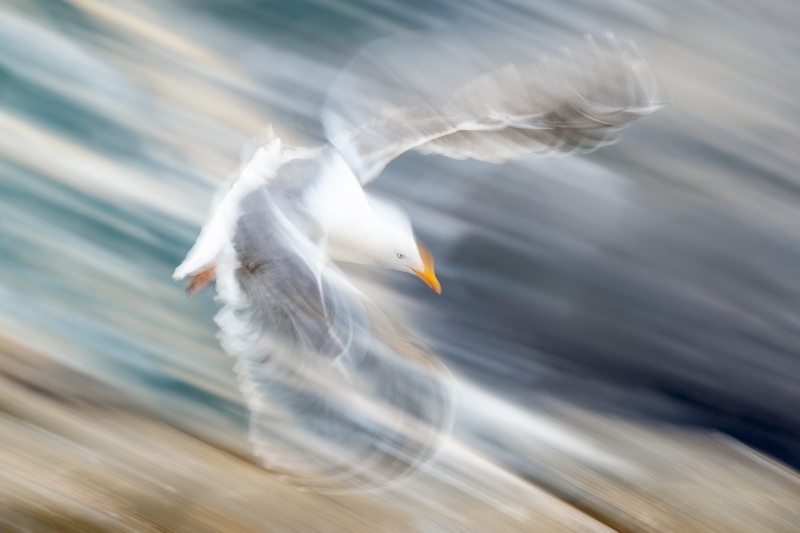
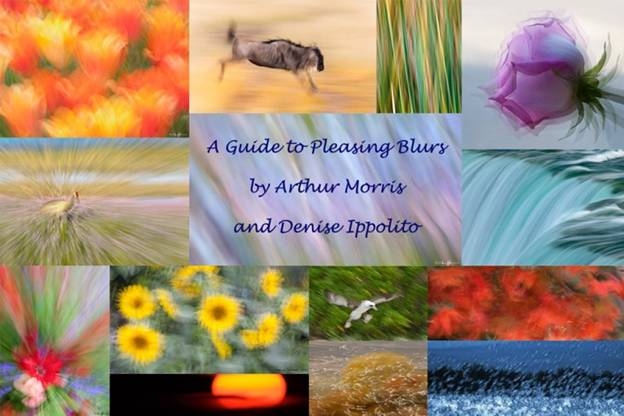














The bill blur above the bill bugged you.
I think the image is beautiful!
I agree with Joel. Anyway that blur from the beak does bug me. otherwise it’s a very beautiful image.
Artie
Ditto things Warren said about yesterdays Event Space….Thumbs up 🙂
What bugs you…hummm not sure if it bugs you but it bugs me. I am ok with the blacks on the wing areas and the gold on the beak but there’s a line of streaks in front of the beak just above it and again 6-8 inches in front of him which stop and is a little distracting and had it flow to the right side of the frame everything would be flowing together as with the rest of the photo.
Always with love b
Love this image! Perhaps the dark area on the wing, directly to the right of the feet, bugged you.
Generally I don’t care much for blurrs, but the work you did on the eye sells it for me, and I really like this one! I think the ruffled dark feathers one top of the right wing bugs you a bit.
I very much enjoyed your Event Space presentation yesterday, so thanks for all the work you did on that!
Thanks for all, Warren. Love to you both,
a
The dark/black, “wing” shape, bottom, right side image
I think perhaps the thing that bugs you a bit is the yellow patch on top of the bird’s head created by the blurring of it’s bill.